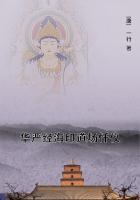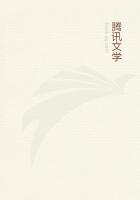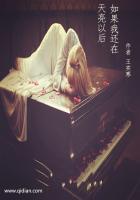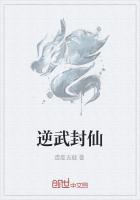In these there are two things to take into consideration. The narrow rear tubes of 5 or 5 1/2 millimetres (.195 to .214 inch.--Translator's Note.)--and these are the most numerous--contain males and males only, but in short series, between one and five. The mother is here so much hampered in her work that they are rarely occupied from end to end; the Osmia seems in a hurry to leave them and to go and colonize the front tube, whose ample space will leave her the liberty of movement necessary for her operations. The other rear tubes, the minority, whose diameter is about 6 millimetres (.234inch.--Translator's Note.), contain sometimes only females and sometimes females at the back and males towards the opening. One can see that a tube a trifle wider and a mother slightly smaller would account for this difference in the results. Nevertheless, as the necessary space for a female is barely provided in this case, we see that the mother avoids as far as she can a two-*** arrangement beginning with males and that she adopts it only in the last extremity. Finally, whatever the contents of the small tube may be, those of the large one, following upon it, never vary and consist of females at the back and males in front.
Though incomplete, because of circumstances very difficult to control, the result of the experiment is none the less very striking.
Twenty-five apparatus contain only males in their narrow gallery, in numbers varying from a minimum of one to a maximum of five. After these comes the colony of the large gallery, beginning with females and ending with males. And the layings in these apparatus do not always belong to late summer or even to the intermediate period: a few small tubes contain the earliest eggs of the Osmiae. A couple of Osmiae, more forward than the others, set to work on the 23rd of April. Both of them started their laying by placing males in the narrow tubes. The meagre supply of provisions was enough in itself to show the ***, which proved later to be in accordance with my anticipations. We see then that, by my artifices, the whole swarm starts with the converse of the normal order. This inversion is continued, at no matter what period, from the beginning to the end of the operations. The series which, according to rule, would begin with females now begins with males. Once the larger gallery is reached, the laying is pursued in the usual order.
We have advanced one step and that no small one: we have seen that the Osmia, when circumstances require it, is capable of reversing the sequence of the ***es. Would it be possible, provided that the tube were long enough, to obtain a complete inversion, in which the entire series of the males should occupy the narrow gallery at the back and the entire series of the females the roomy gallery in front? I think not; and I will tell you why.
Long and narrow cylinders are by no means to the Osmia's taste, not because of their narrowness but because of their length. Remember that for each load of honey brought the worker is obliged to move backwards twice. She enters, head first, to begin by disgorging the honey-syrup from her crop. Unable to turn in a passage which she blocks entirely, she goes out backwards, crawling rather than walking, a laborious performance on the polished surface of the glass and a performance which, with any other surface, would still be very awkward, as the wings are bound to rub against the wall with their free end and are liable to get rumpled or bent. She goes out backwards, reaches the outside, turns round and goes in again, but this time the opposite way, so as to brush off the load of pollen from her abdomen on to the heap. If the gallery is at all long, this crawling backwards becomes troublesome after a time; and the Osmia soon abandons a passage that is too small to allow of free movement.
I have said that the narrow tubes of my apparatus are, for the most part, only very incompletely colonized. The Bee, after lodging a small number of males in them, hastens to leave them. In the wide front gallery, she can stay where she is and still be able to turn round easily for her different manipulations; she will avoid those two long journeys backwards, which are so exhausting and so bad for her wings.
Another reason no doubt prompts her not to make too great a use of the narrow passage, in which she would establish males, followed by females in the part where the gallery widens. The males have to leave their cells a couple of weeks or more before the females. If they occupy the back of the house, they will die prisoners or else they will overturn everything on their way out. This risk is avoided by the order which the Osmia adopts.
In my tubes with their unusual arrangement, the mother might well find the dilemma perplexing: there is the narrowness of the space at her disposal and there is the emergence later on. In the narrow tubes, the width is insufficient for the females; on the other hand, if she lodges males there, they are liable to perish, since they will be prevented from issuing at the proper moment. This would perhaps explain the mother's hesitation and her obstinacy in settling females in some of my apparatus which looked as if they could suit none but males.
A suspicion occurs to me, a suspicion aroused by my attentive examination of the narrow tubes. All, whatever the number of their inmates, are carefully plugged at the opening, just as separate tubes would be. It might therefore be the case that the narrow gallery at the back was looked upon by the Osmia not as the prolongation of the large front gallery, but as an independent tube. The facility with which the worker turns as soon as she reaches the wide tube, her liberty of action, which is now as great as in a doorway communicating with the outer air, might well be misleading and cause the Osmia to treat the narrow passage at the back as though the wide passage in front did not exist. This would account for the placing of the female in the large tube above the males in the small tube, an arrangement contrary to her custom.

